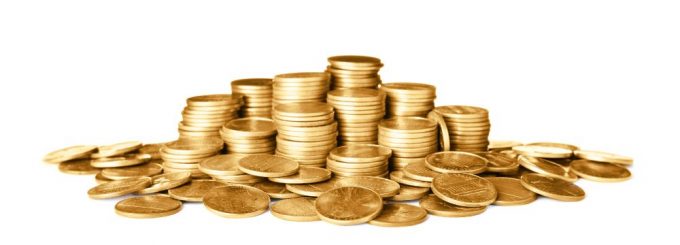2013 India Gold Sovereign Coin Overview

In 2013 Queen Elizabeth II commemorated her sixty year reign, which was honored by the release of this stunning gold sovereign coin by the British Royal Mint. This coin is distinct in that a limited number of issues were made for that specific day, which are approximately 2013 units. However, the coin was so successful that a total of 15,000 coins would eventually be produced.
Features
These coins are boxed individually and always include a COA, or Certificate of Authenticity. Most feature a Brilliant Uncirculated finish and the coin’s reverse side displays an image by Benedetto Pistrucci of St. George killing a dragon. On the obverse side an image of Queen Elizabeth II herself can be seen, which was created by artist Ian Rank-Broadley.
The Gold Sovereign is one of the most popular coins to be issued by the United Kingdom, and are affectionately referred to as “Sovs” by many collectors. They were first minted in 1817 and continued until 1917, but were reintroduced for 1925, 1957 and other years.
Background
Because India was once a colony of the United Kingdom, there are gold sovereigns which were issued for that specific region. Rather than being minted in the UK, India had its own mint at Mumbai (then known as Bombay), which minted its version of the coin. Any coin which was minted outside the UK carries a miniature mint mark which shows the letters SA, C, S, M, P or I on top of the date. Although the 2013 coin uses the word “India” in fact it was minted in the United Kingdom.
The gold sovereign is considered by many to be a continuation of the English sovereign, which was issued until 1604. The year 1816 marked the nation’s Great Recoinage period, when they revived its name. At the time gold coinage appeared in 22 carats or 123.27 grains, and the weight has remained the same up until the present day. Britain wanted to maintain its gold standard, so the government set the value of its silver at sixty six shillings for each troy pound and coins made of silver were legal only up to two British pounds.
The very first sovereigns showcased King George III’s profile, and the timeless depiction of St. George killing the dragon was first created by Benedetto Pistrucci who was an engraver from Italy who became the chief medalist for the British Royal Mint. Because so many gold sovereigns have been minted over the centuries, some collectors are worried about forgeries, but they shouldn’t be.
The reason is because gold in general is hard to counterfeit because of its distinct properties. The yellow metal is quite dense and if a different metal is used for gold plating the coin would be either underweight, half thick or over diameter, which any expert can detect with ease. A more sophisticated technique would be melting down the coin and then recasting it into a date that is highly coveted, but even this can be detected.


